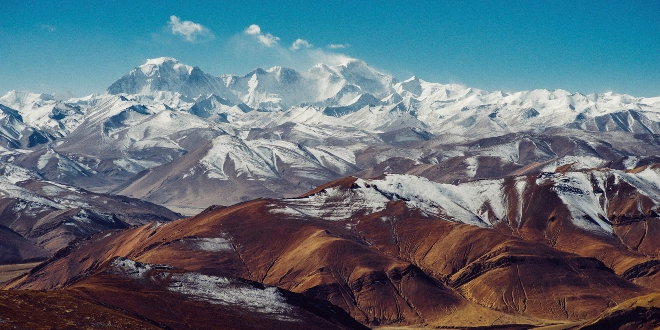A new study suggests that the upper part of the Indian tectonic plate may be undergoing a splitting process due to its continuous collision, causing significant geological changes in Tibet. This research, presented at the American Geophysical Union’s annual meeting, indicates that the geological dynamics beneath the Himalayas, the world’s tallest mountain range, are more complex than previously understood.
The Himalayas are still rising as the Indian and Eurasian tectonic plates collide beneath them. Generally, when an oceanic and a continental plate collide, the denser oceanic plate subducts under the lighter continental plate. But the collision of two continental plates, like the Indian and Eurasian plates, is less predictable due to their similar densities.
Some geoscientists theorize that the Indian plate may be undergoing underplating, a process where one continental plate slides beneath another without sinking deep into the mantle. Others believe that the inner parts of the Indian plate are subducting while the upper parts press against Tibet.
The recent study posits that the Indian plate is indeed subducting, but in the process, it is bending, tearing, and its upper layer is peeling away akin to a lid from a tin can. This theory was supported by analyzing earthquake waves traveling through the crust at the collision zone, which revealed slashes in the Indian plate’s crust.
Science Magazine reported that while some parts of the Indian plate extend as deep as 124 miles (200 kilometers), other areas are only 62 miles (100 kilometers) deep, indicating that a portion of the plate has separated.
In 2022, researchers used helium emissions from geothermal springs in the area to locate the boundary where the two plates meet in the Himalayas. This geochemical study, along with evidence from earthquake waves, suggests the Indian plate is fragmenting.
While the exact link between the deep internal tearing and warping of the crust and surface stress buildup is not fully understood, this study could provide insights into regions of heightened earthquake risk near the plate boundary.


